Ready for Single Digits? Prepare with Our Winter Pet Safety Guide
Ready for Single Digits? Prepare with Our Winter Pet Safety Guide
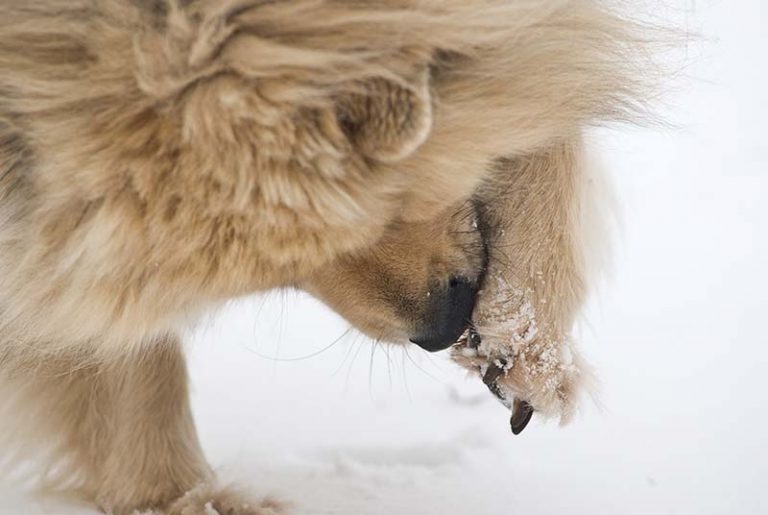 Animals are highly adaptable, but that doesn’t mean Chihuahuas can handle sub-zero temperatures or that huskies thrive in the desert. Each pet acclimates to environmental changes in different ways, but sometimes, they need our help to survive seasonal extremes. Without a proactive approach to winter pet safety, the animals we love may face deadly hazards.
Animals are highly adaptable, but that doesn’t mean Chihuahuas can handle sub-zero temperatures or that huskies thrive in the desert. Each pet acclimates to environmental changes in different ways, but sometimes, they need our help to survive seasonal extremes. Without a proactive approach to winter pet safety, the animals we love may face deadly hazards.
Mild to Wild
Pets adapt to seasonal shifts in temperature and humidity via their coats, which thicken during the fall. Although a great defense against the cold, wet, and windy weather, thicker coats do not replace the vital need for shelter.
Serious Risks
Exposed animals are at risk for hypothermia and frostbite. Because they react to cold through shivering and depressed breathing, indoor-outdoor pets must have access to weatherproof shelter, unfrozen water, and food to help replace spent calories.
Older and Younger
Pets in good physical health face better odds when it comes to winter pet safety. Puppies or kittens, as well as senior pets, are known to lose body heat more quickly because they have less insulating body fat and muscle mass and a weak shivering response. To compensate, many pet owners add more high-value nutrition during the winter months.
However, your best bet for protection is to simply keep these pets inside and comfortable. Keep them away from cold drafts, wet conditions, and make sure they’re warm at all times. Exposure to bitter cold can decrease a pet’s disease resistance, resulting in new or worsening cases of pneumonia or osteoarthritis.
Speaking of Their Coats…
While their coats are at peak thickness, don’t forget to brush them out. A clean, mat-free, fluffy coat offers superior protection from the elements. Plus, distributing the skin’s natural oils throughout the body can help ward off dry, itchy skin. Insulating sweaters, vests, and jackets are game changers when it comes to keeping up with daily outdoor exercise.
Other Elements of Winter Pet Safety
Depending on your pet’s species, breed, age, and lifestyle, the following winter pet safety tips may come in handy:
- Shovel out a specific spot for your dog to go to the bathroom during severe weather.
- Be aware of antifreeze risks. Clean up any leaks or spills immediately, and do not allow your pet to drink from puddles.
- Cleaning up your pet’s feet after being outside reduces the effects of salt, chemical deicers, ice, and snow pack. Be sure to trim the hairs between the paw pads to minimize ice balls. A pair of booties can make all the difference.
- Keep your dog on leash. Their sense of smell is impaired by snow, and they can get lost more easily. Microchip your pet and update your contact information if necessary.
- Do not leave your cat or dog inside your car during the winter.
- Bang on the hood of your car before turning the key. Cats are known to crawl up next to the engine block to stay warm.
- Portable heaters and fireplaces can present fire hazards. Supervision is always required.
Please contact us with additional questions or concerns about winter pet safety. Our veterinarians and staff members are always here for you and your pet. Stay warm!
So You Adopted a New Pet…Now What?
 Sharing your life with an animal is such a worthwhile experience, but bringing home a new pet is not without its challenges. First and foremost, pet owners must be able to responsibly provide for their new addition in every possible way. But don’t worry – preparing for and meeting the needs of your new pet can be fun!
Sharing your life with an animal is such a worthwhile experience, but bringing home a new pet is not without its challenges. First and foremost, pet owners must be able to responsibly provide for their new addition in every possible way. But don’t worry – preparing for and meeting the needs of your new pet can be fun!
Before You Roll Out the Welcome Mat
It’s common for animal lovers to convince themselves that love is all they need to care for a new pet. This is undoubtedly important, but without a commonsense approach to living quarters, sustainability, and commitment, even the most loved pet is still at risk of being surrendered. Before making any final decisions, ask yourself the following questions:
- Are you allowed to have a pet where you live? If so, is a pet deposit required? Do your living quarters realistically support the needs of a potential pet (backyard space, living with other pets, access to exercise, etc.)?
- Do you live with others who may have allergies or aversions to certain species or breeds?
- Do you make enough money to meet the health care needs of a pet?
- Are you willing to dedicate several hours each week to training and exercising your new pet?
- Have you considered the needs of other animals you already own?
The Right Match
Choosing the right pet for you is a huge part of the adoption equation. It’s a decision that will impact others for many years and must be one that lasts forever. We’re happy to help you make this life-changing decision.
Bringing Your New Pet Home
Once all the major factors have been considered, there’s a lot that must happen at home and around your property to ensure your new pet’s safety, comfort, and happiness.
- Pet proof your space. Take a close look at what your new pet may encounter. Cords, electrical wires, and other entrapment risks should be removed. Cleaning chemicals, certain plants, medications, and personal products must also be stored properly. Be sure to stash all food off tables and counters.
- Talk with others in your home. If you live with other people, spend time with your roommates or family members (especially kids) discussing how to care for your new pet.
- Get the right gear. Your new pet will require food, bowls, bedding, toys, and ID tags to wear on a new collar and leash. It’s also important to consider bathroom and crate needs.
The First Vet Visit
Some pets are spayed or neutered before adoption and receive some vaccines and parasite preventives. That being said, it’s vital to get a head start on your new pet’s wellness as early as a few days after bringing them home. During your visit, we can discuss any potential problems, the need for training, and address the importance of microchipping.
It can take a few weeks to a few months for everyone in your home to become accustomed to your new pet. If we can help move the transition along, please contact us.
Congratulations on your new pet!
The Great Escape: The Importance of Microchipping Your Pet
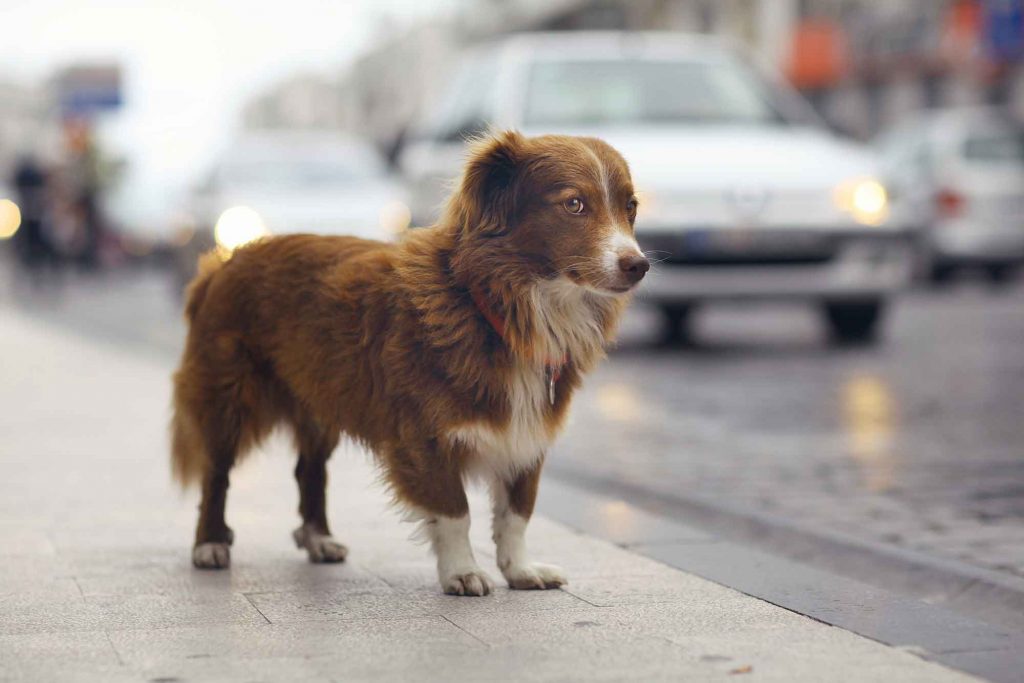 The thought of a pet escaping the home or yard isn’t something pleasant to consider. However, it’s estimated that one in three pets will go missing at some point in their lives. Even with the best of precautions, a curious cat or canine can easily slip through an open door, gate, or window.
The thought of a pet escaping the home or yard isn’t something pleasant to consider. However, it’s estimated that one in three pets will go missing at some point in their lives. Even with the best of precautions, a curious cat or canine can easily slip through an open door, gate, or window.
That’s why microchipping your pet is one of the best defenses you have in avoiding a missing pet tragedy. The team at The Bluffs encourages all pet owners to consider this effective and permanent form of identification.
Microchipping Your Pet for Added Peace of Mind
A microchip might sound a bit high tech, but it isn’t an elaborate tracking system. Rather, a microchip is simply a tiny radio frequency transponder no bigger than a grain of rice. Unlike GPS, the transponder does not require a battery but emits a radio frequency signal only when it’s picked up by a specific type of scanner used to read microchips.
Microchips are also covered in a bio-capsule that’s safe and compatible for implantation under the skin. Typically, microchipping occurs during a pet’s spay or neuter surgery. The implantation itself is fast, does not require anesthesia, and is mostly painless – about the equivalent of receiving a vaccine shot.
Once implanted, newer microchips are designed to bond with the surrounding tissues, usually between the shoulder blades or the “scruff” of the neck. After this procedure, your pet will have a unique identification number for life, and you will be given the paperwork to register your pet with a registry that tracks these numbers and manages your contact information.
We also want to stress the importance of maintaining up-to-date information with the registry throughout your pet’s life, since accurate information is essential for reuniting with a missing pet.
While there’s not a 100% guarantee that any pet who goes missing will find his or her way back home, microchips are the safest, most effective choice since they cannot be removed or break off like ID tags.
Preventing an Escape
To prevent a missing pet scare, your friends at The Bluffs recommend:
- Providing obedience training to canine pets, teaching important commands such as “stay” and “here”
- Installing pet proof perimeter fencing around the home
- Keeping your pet on a leash at all times when out on walks or away from the yard
- Maintaining current photos of your pet should he or she become lost (for missing pet posters and online notices)
- Putting your pet in a secure room during holiday gatherings or parties, when doors can accidentally be left open
- Using a secure carrier or crate when traveling with your pet
If you would like more information on the benefits of microchipping, we’re happy to answer your questions.
When Storms and Fireworks Cause Profound Pet Anxiety
 If you ask anyone living outside of Minnesota about our seasons, they may mention the one season we’re famous for – an extremely long winter. All kidding aside, we do have a full four seasons with temperature extremes during both the winter and summer. Instead of bitter cold and snow, however, we tend to face high heat and humidity between Memorial Day and Labor Day.
If you ask anyone living outside of Minnesota about our seasons, they may mention the one season we’re famous for – an extremely long winter. All kidding aside, we do have a full four seasons with temperature extremes during both the winter and summer. Instead of bitter cold and snow, however, we tend to face high heat and humidity between Memorial Day and Labor Day.
What does all of this mean for your four-legged friend? For starters, pet anxiety is a real possibility because the shift in weather leads to 30-40 thunderstorms in southern Minnesota alone. Loud noises and changes in air pressure can impact pets more intensely than they impact us.
Such a Display
Thunderstorms have the potential to mesmerize – or terrorize – pets and people alike. The sheer display of power can trigger a sense of awe, but for those with noise sensitivities, storms are a formidable foe. Not only can they be stressful for the animal in your care, but pet anxiety can toss everyone into a real tailspin.
Know the Score
Before a storm’s telltale first rumble, an anxious pet may start to pace, hide, whine, cling to specific people, or even try to bolt. Thundershirts are effective antidotes to stressful situations, as they’re often compared to swaddling a baby. Sure, if a pet doesn’t enjoy wearing vests, sweaters, or any type of clothing, it may be a challenge. However, over time, this drug-free option may be a great solution for pet anxiety.
Shelter From the Storm
Pet anxiety can also be triggered by fireworks, loud music, and the unpredictability of surrounding strangers. It’s not always easy to zero-in on a pet’s behaviors, but you can also try the following to soothe frayed nerves:
- Desensitize your pet by playing recordings of thunderstorms and rain during the off-season. When a storm does ultimately roll in, he or she may not get as upset.
- Do not reward negative behaviors triggered by stress (this will only perpetuate them). Instead, model calm behavior and reward your pet when he or she follows suit.
- If you’re out in a storm, make sure your pet is attached to you via leash. A general rule is to keep your pet close to you during the length of the storm.
- Establish crate training before the summer. This will allow your pet the option to hunker down during thunderstorms or the Fourth of July, bolstering his or her sense of security. Just make sure your pet is not confined inside the crate or kennel, and replenish any water or treats as needed.
- Reduce pet anxiety during a storm or fireworks display by placing your pet in a small room with few or no windows. Turn on some white noise, TV, or music to distract and calm your pet.
- If you pet is willing, try to play with him or her during the storm to create a new positive association. Of course, if your pet is too upset, simply be there and offer snuggles, strokes, and scratches.
Calming Pet Anxiety
It may be in your pet’s best interest to have a medication prescribed for anxiety. There are also other products including herbal therapies that we’re happy to discuss with you prior to the biggest season for thunderstorms, fireworks, crowds, and parties. If we can help ease your pet’s suffering, we encourage you to contact us.
On Pins and Needles: The Wonderful World of Veterinary Acupuncture
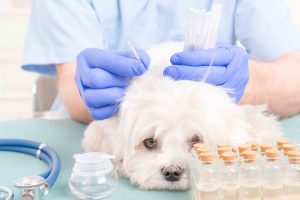 Modern veterinary medicine is amazing. Animals are living longer than ever before, and sick pets have an incredible number of options for their treatment and care. Organ transplants, immunotherapy for cancer, and advanced orthopedic surgeries are a reality.
Modern veterinary medicine is amazing. Animals are living longer than ever before, and sick pets have an incredible number of options for their treatment and care. Organ transplants, immunotherapy for cancer, and advanced orthopedic surgeries are a reality.
At The Bluffs Pet Clinic, it is important to us to bring options to our pet patients. We accomplish this through alternative and complementary treatment modalities like veterinary acupuncture. Keep reading to learn how this type of therapy is helping our veterinary patients.
Acupuncture 101
While it may look like sticking needles haphazardly into an unsuspecting patient, acupuncture is an ancient and intricate technique.
One of the four branches of Traditional Chinese Veterinary Medicine (TCVM), acupuncture has been around for thousands of years. Veterinary acupuncture utilizes the insertion of special needles into the body at very specific locations in order to stimulate strategic points. Acupuncture points are located along the channels that Qi, or energy, is thought to move through within the body.
Acupuncture aims to correct energy flow imbalances and disharmony that are created due to disease and weakness.
A certified acupuncture clinician, such as our own Dr. Cook, uses their knowledge of acupuncture and other TCVM principles to augment more traditional treatments for pets in need.
Helping Pets Through Veterinary Acupuncture
Acupuncture can be used for a great many purposes in veterinary medicine. Any disease or condition that we can diagnose can be benefited from veterinary acupuncture.
Some of the more common applications include:
- Management of orthopedic disease
- Treatment of nerve injuries and diseases
- Pain relief
- Treatment of gastrointestinal disturbances
- Management of seizure disorders
- Support of healthy organ function
- Treatment of respiratory problems
- Augmentation of immune function
- Treatment of inflammation
Acupuncture is typically well tolerated by our pet patients and offers very few side effects. Adverse reactions are uncommon when the treatments are performed by a professional.
The best part about veterinary acupuncture is that it complements traditional veterinary medicine so well. There is no need to rely on only Western medicine to treat a pet for osteoarthritis. Acupuncture can offer another means of relief that may be even more effective when combined with things like medications, supplements, and physical therapy.
We know how important it is to our pet owners to provide the very best care for their four-legged family members. At The Bluffs Pet Clinic, we are committed to opening doors to our animal patients wherever we can. If you would like to learn more about how acupuncture can help your pet, call us today. We are happy to answer all your questions and get started with a treatment plan, personalized for your best friend.
Don’t Poison Your Pet With Mouse Poison This Summer…..Or Anytime
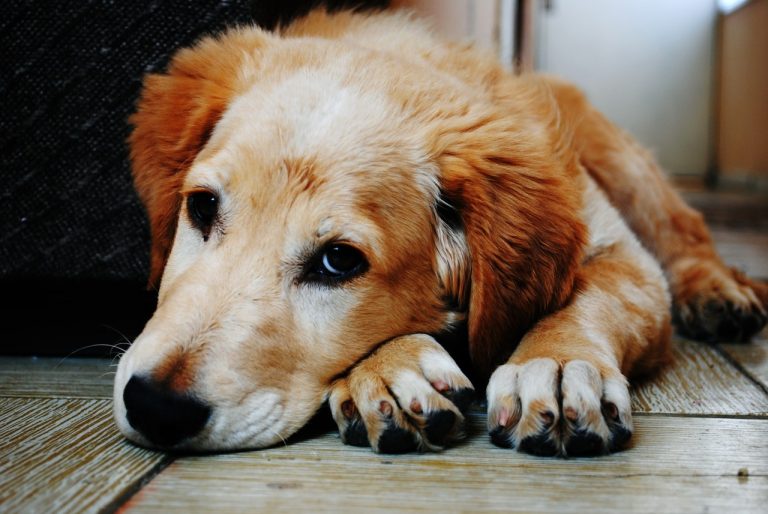 It’s summer, and whether you’re at home, the cabin or a resort, mouse and rat poisons are a lethal threat to your pets. Many people believe that it is ok to use as long as it is put out of reach of pets, but here’s why that’s a danger.
It’s summer, and whether you’re at home, the cabin or a resort, mouse and rat poisons are a lethal threat to your pets. Many people believe that it is ok to use as long as it is put out of reach of pets, but here’s why that’s a danger.
People using poison often place it up high (where it can fall off) or in an inconspicuous corner. The problem is, rodents hoard poison and will move it to a favorite spot—like inside an old shoe, or somewhere undisturbed. Either way, your pet can find it and ingest it.
Fortunately, there are ways to kill rodents without risking your pet’s life.The best thing you can do at home or your cabin is to never use poison; use a mouse trap instead. There are many styles available now to suit your needs. BUT, you never know what neighbors or resort owners use for rodent control.
If you’ve got a pet roaming or if you are in a cabin you don’t own, be vigilant and take these precautions:
1. If traveling, get the name, phone number and hours of a vet clinic near your destination. Add it to your phone before you hit the road.
2. When renting a cabin, first ask the owners if they use rodent poison. If they do—consider staying elsewhere, or ask them to remove it before you arrive. (Even then, there’s a chance that poison may be in the vicinity of your pet.)
3. Inspect the cabin when you arrive. Check shelves and inconspicuous places for small boxes of poison such as D-Con, or little nuggets that resemble cat food or are brightly colored. Google “mouse poison photos” to see examples of the many types of poison to watch for. Check outside around the foundation of the cabin as well.
Often times we are completely unaware that our pet has eaten mouse poison. That’s why it’s important to recognize the symptoms before it’s too late.
SYMPTOMS
Here’s where it gets dicey. There are a variety of poisons that kill in a number of ways. That means, symptoms of poisoning vary, depending on the poison. Here’s a list of symptoms to watch out for. Symptoms vary, of course, with the poison.
• Lethargy
• Difficulty breathing
• Pale gums
• Coughing (especially of blood)
• Vomiting (especially with blood)
• Bloody nose
• Swelling or bruising of the skin
• Collapse
• Bleeding from the gums
• Not eating
• Weakness
• Decreased or increased thirst/urination
• Bad breath
• Tremors
• Anxiety
• Walking “drunk”
• Tremoring
• Seizuring
• Coma
• Drooling
If you see any of these symptoms, contact your vet immediately. If caught early, there are antidotes for some poisons. Call The Bluffs Pet Clinic should you have more questions or see any of the above symptoms in your pet.
Dr. Cook is a 1997 graduate of the Wisconsin School of Veterinary Medicine and purchased The Bluffs Pet Clinic in 2001. She is certified in Veterinary Acupuncture and well versed in the use of Chinese Herbs. In her spare time she can be found playing ball with her Golden Retrievers.
A Gentle Approach to Pet Care: Announcing Our Fear Free Certification
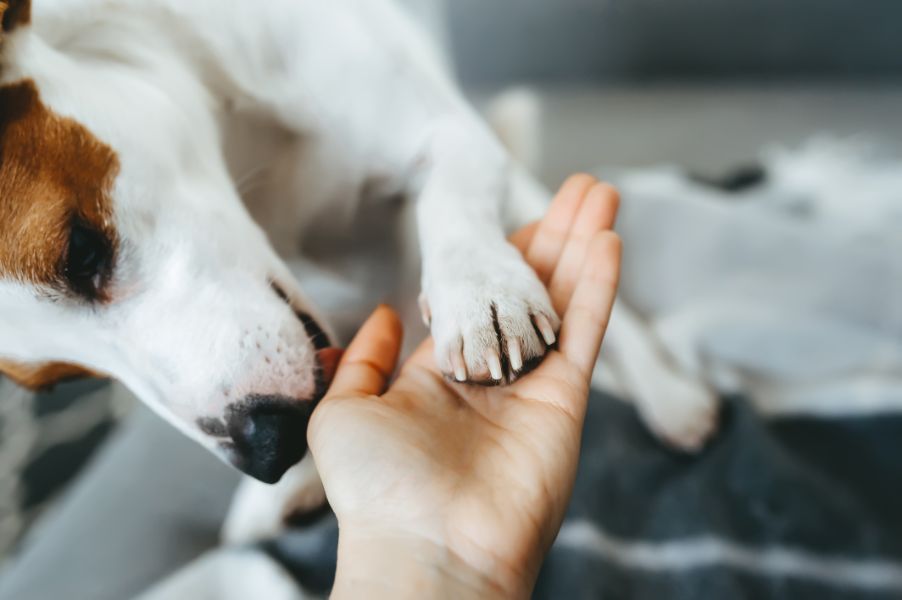
Recently, The Bluffs Pet Clinic acquired our Fear Free certification, and we’re both excited and proud to tell you more about what this means for our clinic and how it helps your pet!
For many pet owners, something about taking your pet to the vet (especially the family cat) that evokes trepidation. You may have lucked out with the most friendly, fearless dog or cat around, but for many pets, the sites, smells, and overall bustle of an office visit can be overwhelming.
Thankfully, the veterinary community has taken notice of this and endeavored to adapt and overcome the many obstacles of the traditional clinic environment and create and atmosphere that pets respond to and enjoy, ultimately making your pet’s visit more enjoyable and productive.
What is a Fear Free Certification?
Based on the findings of veterinarian Dr. Marty Becker, the Fear Free program responds to the emotional wellbeing of pet patients. Studies from Bayer Veterinary Healthcare in 2014 found that 37 percent of dog owners and 58 percent of cat owners reported their pets were afraid of going to the vet.
What’s alarming about these statistics is that for many pet owners, their pets do not receive preventive care, which is necessary to maintain good health. In some cases, this may also mean a disease or other condition goes untreated.
For these reasons, Fear Free was developed as an educational initiative for pet owners and veterinarians to encourage a calmer, more relaxing, and ultimately successful experience with veterinary visits.
Drawing on the knowledge and expertise of veterinarians and animal behaviorists, the Fear Free Program teaches the following skills:
- Gentle handling techniques
- Recognizing subtle cues of anxiety and stress
- Creating positive association with examinations
- Creating a calm environment
The Advantages of a Fear Free Practice
For us, our commitment to a Fear Free practice goes far beyond the required coursework. It’s our goal to partner with all pet owners to identify stressors that prevent their pets from having a positive experience and work toward creating a successful one.
Some of our low-stress, comforting techniques include:
- Quiet areas
- Pheromone use, which can calm cats and dogs
- Gentle restraint (when needed)
- Soothing, calm exam rooms
- Toys, treats, and plenty of attention to encourage positive association
Along with our Fear Free certification, we’re also a Cat Friendly Practice!
Is Your Pet Anxious?
We know it’s tough to witness a beloved pet in distress. However, annual and follow-up care is critical to your pet’s health, quality of life, and longevity. There are many ways we can help you prepare for your next visit with us. At-home behavior modifications and reward-based training can do wonders!
If you’d like to learn more about our Fear Free certification and our approach to holistic veterinary care, we welcome your call! Emotional wellness matters, and we’re here to make you and your sweet pet as comfortable as possible.
Solving Your Pet Food Dilemma
Did you know that genetics, nutrition and care are the three factors that most impact your pet’s longevity? This and upcoming blogs will discuss those factors in detail. Today’s blog addresses nutrition.

Ever feel overwhelmed when you go to your grocer or pet store to buy food for Fido? It’s no wonder. Pet food brands and types have mushroomed as more people become pet owners. In fact, research shows that US pet ownership has grown by nine million in the past decade. Some 67 million households now include a pet. So it’s no surprise that more and more businesses want a piece of the pet-food pie. The question is, which foods are fad, and which foods are legitimate, and how do you know what to buy for your pet? Here are thoughts on how to best choose the right food for your pet.
Just like we are what we eat, our pets are also what they eat. Feed them a high quality pet food! If you are looking for a high quality commercial pet food, look for those that have passed the AAFCO feeding trials (Association of American Feed Control Officials).
If your pet is healthy, it’s a bit easier to find the right food. If your pet has a food allergy, however, beware of over –the-counter foods boasting they’re a “novel ingredient” diet. Testing has shown that about 10% of the time, companies substitute another “meat” for the “novel ingredients”, and your pet may be allergic to that. Your better manufacturing companies will prepare novel ingredient diets at a separate facility or take strict measures to avoid cross contamination of other ingredients.
In commercial foods, unfortunately the cheaper they are, the more likely they contain lower-quality ingredients. However, you don’t have to buy the most expensive food, either. Stick to major food manufacturers, rather than store-labeled foods or foods with celebrity names.
What to Read on the Label
Check the label to see if it says “Manufactured by” or “Manufactured for”. If the label says manufactured by, that company is vested in high-quality testing and is more likely to have a veterinary nutritionist on staff. Such companies test both the raw ingredients and the finished product.
If the label says “manufactured for,” that company is less likely to have a veterinary nutritionist on board. Equally important, testing is generally less thorough. They often don’t test both the raw ingredients and prepared food. Testing is vital. In particular, it helps prevent recalls due to a bacterial contamination—unfortunately, an increasingly frequent reason for recalls.
You can check for recalls a company has had by visiting the FDA website. Once you have researched a food you think will be good, enlist the help of your veterinarian to help you evaluate your choice. Their in-depth knowledge of your pet’s health combined with their background in nutrition ensure you’ll make the right choice.
The Right Foods for Pet Diseases and Conditions
If your pet has a disease such as kidney, liver, urinary or a gastrointestinal disease, a prescription diet may be healthier for them. Prescription Diets, available from your veterinarian, are especially good and have been researched and tested extensively in both the raw ingredient and cooked stages.
These foods are developed to address the specific nutritional needs of a pet with a serious disease. Pets that are fed these diets have been shown to live longer than pets who are fed a commercial diet.
I know, you say, “but these diets have corn in them!” This is true, many of these diets do have grains, but grains are not necessarily a bad thing. It depends on the pet. These prescription diets are tried and true; they have been researched and tested multiple times on many dogs and cats to ensure they do what they are prescribed to do.
This is especially important if you have a male cat with urinary crystal problems. There are commercial foods labeled to help prevent urinary problems. But if your cat has ever had a urinary obstruction, go with prescription food!
Believe me, I too, have tried numerous other commercial diets for my own cats to address this problem. All I can say, is “Don’t do it. Your pet’s life is too important to risk a life-threatening urinary obstruction!” I feed my cat a prescription diet to help prevent urinary obstructions. Though the ingredients are not on my preferred list, these diets do prevent a crisis.
The most important factors in your pet’s diet are
- The food has been formulated by veterinary nutritionists to ensure it is a complete and balanced diet for your pet
- The food meets your pet’s needs
- The ingredients are tested extensively for contamination
Home-made Pet Food
What about homemade diets? Preparing a homemade diet for your pet is expensive and a lot of work. Yet, many people want to provide homemade diets for their pets. Please know that this does not mean feeding them table scraps or whatever you are having for breakfast or supper. This means using high quality human food ingredients in a diet formulated by a veterinary nutritionist to ensure the diet meets the pet’s nutritional needs. If your pet has no known health concerns then you can visit PetDiets.com for home-made diet recipes formulated by a veterinary nutritionist. The recipes as written will provide a nutritionally complete diet for your pet so no changes should be made for optimum health.
Our pets do not have the same nutritional needs as we do. Diets that do not meet all the pet’s nutritional needs put your pets at risk for diseases. Such diseases can affect their brain, eyes, heart, joints, kidneys, liver, skin and digestive track. So, proper nutrition is vital. Contact us if you would like discuss nutrition recommendations for your pet or if you are interested in learning more about home-made diets.
Dr. Cook is a 1997 graduate of the Wisconsin School of Veterinary Medicine and purchased The Bluffs Pet Clinic in 2001. She is certified in Veterinary Acupuncture and well versed in the use of Chinese Herbs. In her spare time she can be found playing ball with her Golden Retrievers.
How to De-Stress Your Pet’s Visit to the Clinic
 It’s no secret. Some pets dread visiting the veterinarian. That means high-anxiety time for pets and their owners. Fortunately, there are tricks, techniques and products for both dogs and cats that dramatically reduce that stress-or eliminate it altogether.
It’s no secret. Some pets dread visiting the veterinarian. That means high-anxiety time for pets and their owners. Fortunately, there are tricks, techniques and products for both dogs and cats that dramatically reduce that stress-or eliminate it altogether.
Some pets seem to have antennae that warn them when they’re approaching the vet clinic. They know…and they’re not happy about it. Here are a few ways to change your pet’s mindset.
- Take a test-drive to the Bluffs Pet Clinic. Enter the parking lot, but don’t exit the car. Wait a few minutes and then return home. Your pet will see that nothing adverse happened when going to the clinic.
- Next, kick it up a notch. Call us and let us know you’re taking a “test drive” to the clinic. This time, park your car and bring your pet inside. Our friendly staff will be ready to greet your pooch or feline friend with lots of attention, pets and a treat—but no exam. It’s a purely “feel good” trip to the vet that costs you nothing, while creating a pleasant memory for your dog or cat. “Hmmmmm,” says your pooch. “Maybe this place isn’t so bad after all.” And remember cat lovers: our clinic is certified cat-friendly. We have a cats-only area in our waiting room which also helps de-stress vet visits for your cat.
If your pet’s still a bundle of nerves when it’s veterinarian time, Bluffs Pet Clinic offers natural calming supplements for both cats and dogs. Pick them up in advance of your pet’s appointment and give to your pet two hours before you head out.
Another option is Feliway for cats, and Adaptil for dogs. These products are synthetic cat and dog pheromones in a spray form that calm your pet. For cats and dogs brought in a kennel, simply spray the Feliway or Adaptil in the kennel 10 minutes before your pet enters it. If you include their dog or cat blanket in the kennel, spray that, too.
For large dogs, simply spray a pump or two in the room they spend most of their time in, and also in the car 10 minutes before entering it. The calming effect will occur within minutes.
Now that you have a new cache of techniques to make your pet’s vet visit a pleasant one, plan your trial run today, pick up some products and give these techniques a try. Your pet, as they say on “Animal Planet,” is sure to have a “Fear-Free” visit which, in turn, reduces your stress, too.
The stress free preparation doesn’t stop there. At the clinic, we use Feliway, Adaptil and Lavender in the exam rooms before your pet arrives to continue their stress-free visit. Call us today for your “trial run” 651-388-1103.
Four-Legged Rejuvenation: The Benefits of Tui Na for Pets
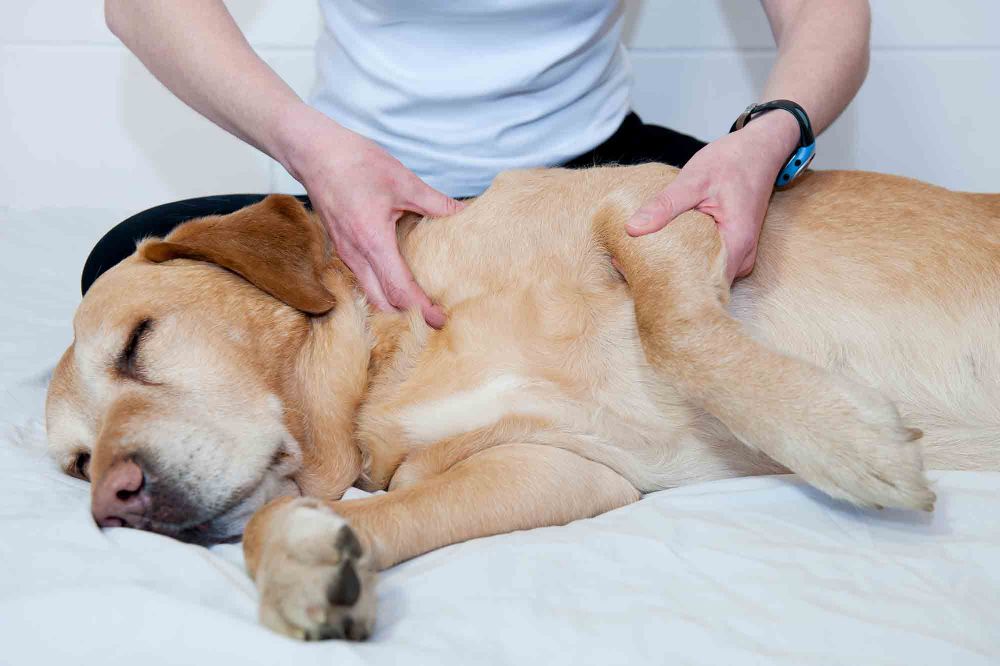
Who among us can deny the pleasure and benefits of a good massage? Whether you have sore muscles, are recovering from an injury, or simply enjoy a little bit of stress relief from time to time, a good massage can certainly hit the spot.
It probably comes as no surprise that massage can have many of the same benefits for pets as it does for people, and that more pet owners are turning to massage as a way to help ease pain and promote healing in their fur babies.
If you’ve ever considered booking a massage for Fido or Fluffy, we invite you to consider Tui-Na, a form of traditional Chinese massage therapy. Tui-Na for pets is growing in popularity as a non-invasive, drug-free way to speed healing and increase well-being (and the pets seem to enjoy it as well).
Continue…
